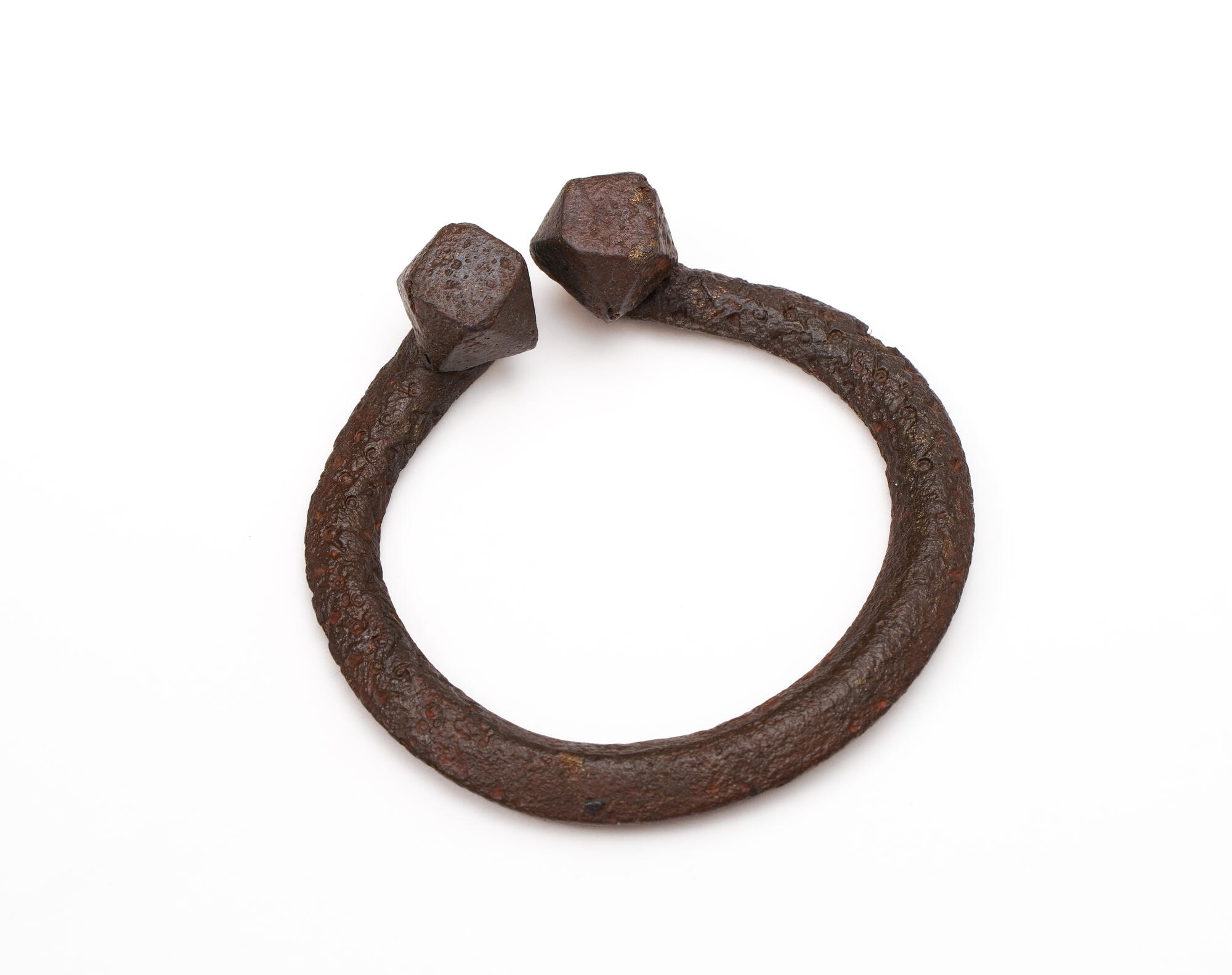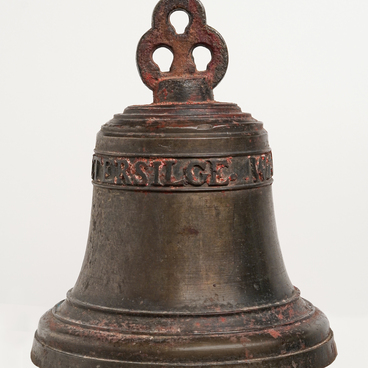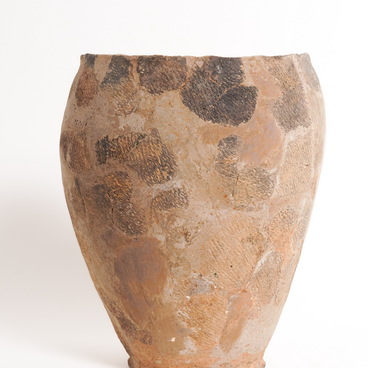A fibula (lat. fibula, which means staple) is a metal clasp for clothing that also serves as decoration, a brooch or pin that has a “lock” for the pointed end to fasten the garment. They were used by the ancient Greeks and Romans, the Vikings, they were also popular with the ancient Slavs. In Ancient Greece women wore fibulae both on the outerwear, and on underwear, men — only on the outwear; usually parts of garments were fastened on the right shoulder, more seldom on the chest, women used fibulae quite often on both shoulders.
Fibulae of various forms were common from the Bronze Age to the early Middle Ages. The fibula often had a complex design. With all the various changes in form and improvements that fibulae underwent during different eras, their general form has remained almost unchanged. Unlike most modern brooches, fibulae are not only decorative, as they originally had a practical function of fastening parts of clothing. The fibula consists of a needle, a shackle or body, a groove (needle holder), and a spring connecting the needle with the shackle.
The horseshoe-shaped bronze fibula with cubic ends from the 10th century, shown in the exhibition, was transferred to the Kolomna Museum of Local History in 2002. The place where it was found is known with an accuracy of several dozens of meters; it is the area of the Kolomna Kremlin, which bears the name “Bludichko” (Saucer). Only the body of the fibula has survived. According to the finder, originally the fibula had a needle and a fragment of a wide strap, which were subsequently lost. When compared to similar items from other excavations in Lithuania and Scandinavia and studied with regard to its shape and ornamentation, this fibula was identified as having appeared in the Kolomna land in 950 AD. Furthermore, the find also clarified the time when early Slavic settlement on the territory of the future Kolomna Kremlin appeared and pointed to the possible links between the Baltic and the Moscow regions.
Fibulae were common from the Bronze Age to the late Middle Ages, and were later replaced by buttons.
Fibulae of various forms were common from the Bronze Age to the early Middle Ages. The fibula often had a complex design. With all the various changes in form and improvements that fibulae underwent during different eras, their general form has remained almost unchanged. Unlike most modern brooches, fibulae are not only decorative, as they originally had a practical function of fastening parts of clothing. The fibula consists of a needle, a shackle or body, a groove (needle holder), and a spring connecting the needle with the shackle.
The horseshoe-shaped bronze fibula with cubic ends from the 10th century, shown in the exhibition, was transferred to the Kolomna Museum of Local History in 2002. The place where it was found is known with an accuracy of several dozens of meters; it is the area of the Kolomna Kremlin, which bears the name “Bludichko” (Saucer). Only the body of the fibula has survived. According to the finder, originally the fibula had a needle and a fragment of a wide strap, which were subsequently lost. When compared to similar items from other excavations in Lithuania and Scandinavia and studied with regard to its shape and ornamentation, this fibula was identified as having appeared in the Kolomna land in 950 AD. Furthermore, the find also clarified the time when early Slavic settlement on the territory of the future Kolomna Kremlin appeared and pointed to the possible links between the Baltic and the Moscow regions.
Fibulae were common from the Bronze Age to the late Middle Ages, and were later replaced by buttons.







